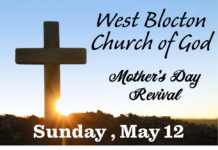“Old Slang Time,” “Odd Lame Pine” – no, you aren’t trying to decipher what a toddler is asking you for. You are reading just two of the many, many things I thought “Auld Lang Syne” was actually saying before I was cognizant enough to know what it truly meant. But hey, when you are a kid who just likes to join in and sing without asking too many questions – you just do what you can with what you have and make a joyful noise anyway.
As I’m sure you are familiar with, “Auld Lang Syne” is a most popular song that is traditionally sung to bring in the New Year around the world. The song is believed to have originated in Scotland and has a long and rich history that is closely tied to the Christian faith. The title of the song is derived from the Scottish phrase “auld lang syne,” which translates to “old long since” or “times gone by.” The song is a reflection on the passage of time and the memories of the past.
The lyrics of “Auld Lang Syne” were written by the Scottish poet Robert Burns in the late 18th century. Burns was a devout Christian and much of his work was inspired by his faith. In fact, the lyrics of “Auld Lang Syne” are believed to have been influenced by a 17th century Scottish hymn called “For Auld Lang Syne,” which was written by a Presbyterian minister named James Watson. The song became popular in Scotland in the 19th century and was later adopted by English-speaking countries around the world as a New Year’s Eve tradition. It is typically sung at midnight on New Year’s Eve as a way to reflect on the past year and look forward to the new one.
In many Christian communities, “Auld Lang Syne” is also seen to honor God and give thanks for the blessings of the past year. The song is often sung in church on New Year’s Eve or during special services on New Year’s Day to reflect on the past and give thanks for the blessings of the present.
It is worth noting that the melody for “Auld Lang Syne” has undergone some slight variations over the years. Different artists and musicians have recorded their own versions of the song, and the melody has been adapted and arranged in various ways. However, the core melody of the song remains largely unchanged and is instantly recognizable to many people around the world. “Auld Lang Syne” is a popular and well-known song that has been recorded by a wide variety of artists over the years. Some popular versions of the song include:
Frank Sinatra recorded a version that was released on his 1957 album “A Jolly Christmas from Frank Sinatra.”
Andy Williams recorded a version that was released on his album “Merry Christmas” in 1965.
Bing Crosby recorded a version that was released on his album “Merry Christmas” in 1977.
Mariah Carey recorded a version that was released on her album “Merry Christmas” in 1994.
Amy Grant recorded a version that was released on her album “Home for Christmas” in 1992.
Rod Stewart recorded a version that was released on his album “Merry Christmas, Baby” in 2012.
These are just a few examples of the many popular artists who have recorded a version of “Auld Lang Syne.” The song has been covered by a wide range of artists over the years, and there are many more versions of the song that have been recorded and released.
Overall, “Auld Lang Syne” is a beloved song that has a rich history and is closely tied to the Christian faith. It is a powerful way to reflect on the past and give thanks for the blessings of the present as we look to the new year ahead. May we all thank the Lord for the many blessings of the last year and seek in earnest for all the ways in which we may look forward with gracious anticipation for what God has in store for us all in 2023. Happy New Year to you all!
Do you have a hymn you would like to know more about? Feel free to send in a request at savannah.pearce@bibbcommunitymedia.com or by giving me a call at 205-926-9769. I would love to hear from you!















